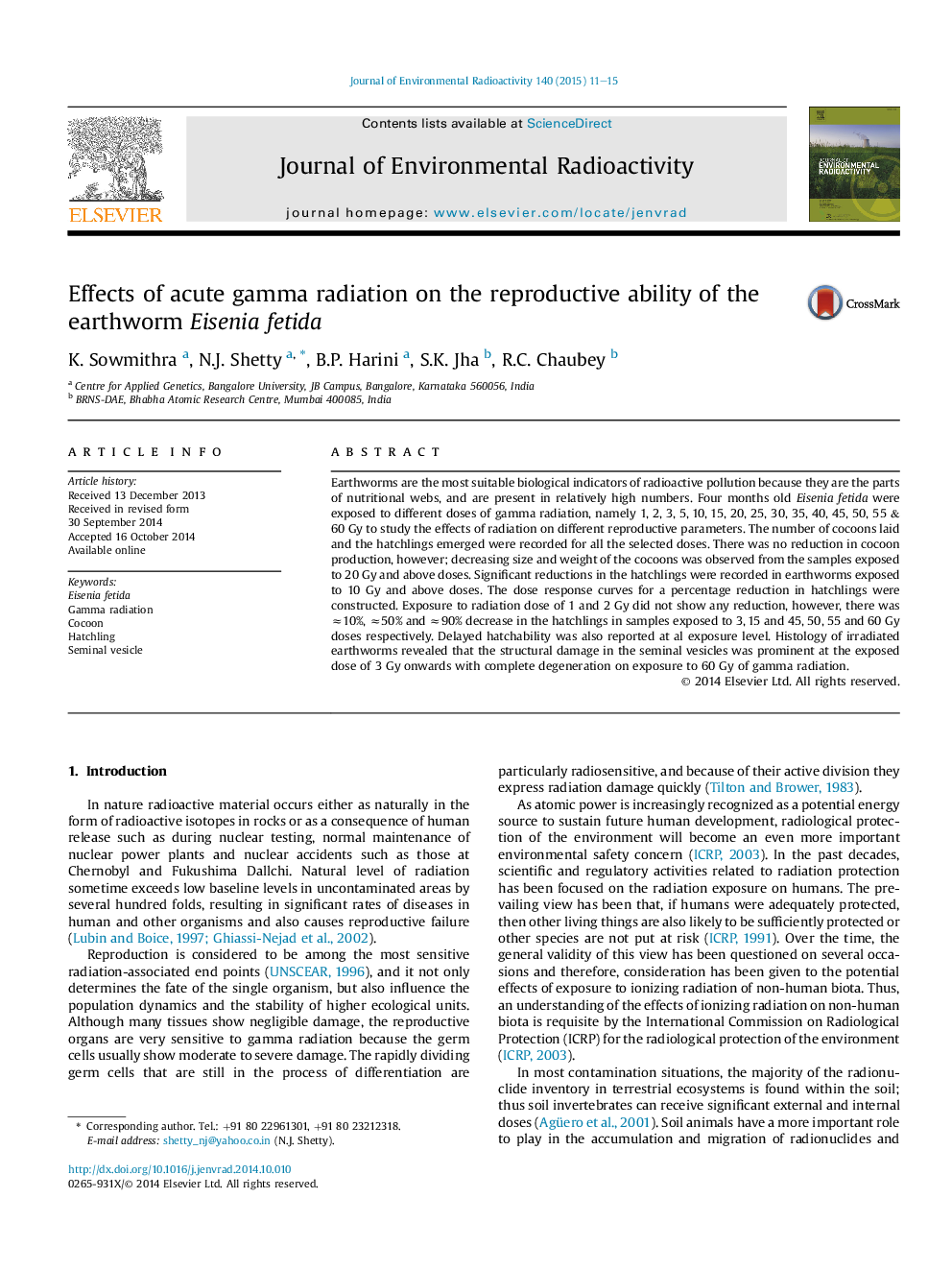| Article ID | Journal | Published Year | Pages | File Type |
|---|---|---|---|---|
| 8082461 | Journal of Environmental Radioactivity | 2015 | 5 Pages |
Abstract
Earthworms are the most suitable biological indicators of radioactive pollution because they are the parts of nutritional webs, and are present in relatively high numbers. Four months old Eisenia fetida were exposed to different doses of gamma radiation, namely 1, 2, 3, 5, 10, 15, 20, 25, 30, 35, 40, 45, 50, 55 & 60Â Gy to study the effects of radiation on different reproductive parameters. The number of cocoons laid and the hatchlings emerged were recorded for all the selected doses. There was no reduction in cocoon production, however; decreasing size and weight of the cocoons was observed from the samples exposed to 20Â Gy and above doses. Significant reductions in the hatchlings were recorded in earthworms exposed to 10Â Gy and above doses. The dose response curves for a percentage reduction in hatchlings were constructed. Exposure to radiation dose of 1 and 2Â Gy did not show any reduction, however, there was â10%, â50% and â90% decrease in the hatchlings in samples exposed to 3, 15 and 45, 50, 55 and 60Â Gy doses respectively. Delayed hatchability was also reported at al exposure level. Histology of irradiated earthworms revealed that the structural damage in the seminal vesicles was prominent at the exposed dose of 3Â Gy onwards with complete degeneration on exposure to 60Â Gy of gamma radiation.
Related Topics
Physical Sciences and Engineering
Energy
Nuclear Energy and Engineering
Authors
K. Sowmithra, N.J. Shetty, B.P. Harini, S.K. Jha, R.C. Chaubey,
